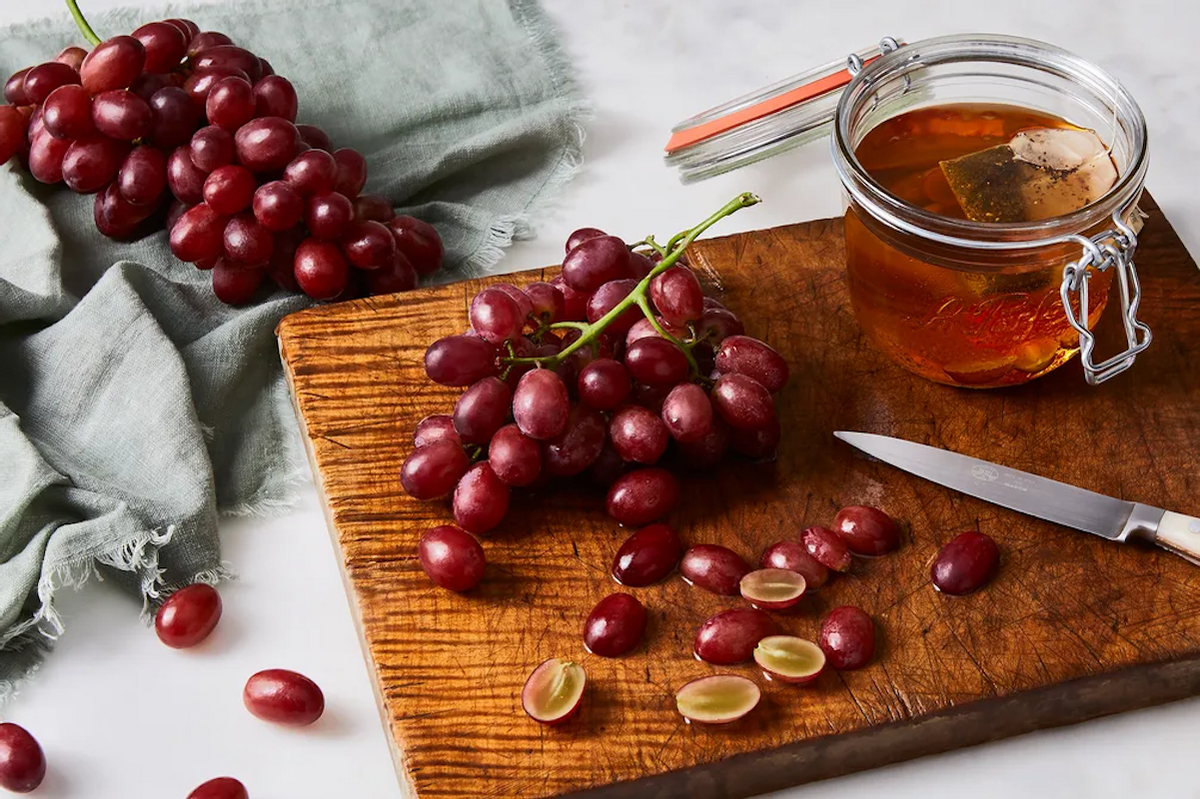When you want a refreshing snack, grab a bunch of grapes. When you need to dress up a cheese board with something full and fancy, grab a bunch of grapes. When you're staging your house and need to fill a fruit bowl on your kitchen island because that's what the Property Brothers do, grab a bunch of grapes. Needless to say, table grapes are always good to have on hand. But what's the best way to store grapes so that they stay plump and are ready to eat at a moment's notice?
Pick up a big bunch of grapes — red or green, seedless or not — from the grocery store and you'll find that they generally come in a perforated plastic bag. Handy for toting in and out of your cart? Yes. Environmentally friendly? Not so much. Despite the fact that grapes are often displayed on tiered shelves, or in a big basket, they should be refrigerated in the crisper drawer to extend their shelf life. You can keep the grapes in the original plastic packaging or ditch it if you happen to own a fancy porcelain fruit basket (let me know if you do, I'm on the hunt).
Whereas my skin only looks better with a thick layer of overpriced gel moisturizer, that's not exactly true of fruit. Like other types of berries, any excess moisture can cause table grapes to get moldy and deteriorate more quickly so store them unwashed. When you're ready for a juicy snack, wash your grapes and pop 'em in your mouth, one right after the other.
To avoid odor absorption, do not store grapes next to onions or leeks or garlic or your three-day-old General Tso's chicken. And it may seem obvious, but the California Table Grape Commission, which yes, is a real society that exists, reminds grape lovers to avoid storing these precious gems with plenty of room to space. That means not squishing them in your crisper drawer with a bunch of celery, a few pounds of apples, a bushel of carrots, and a vine full of tomatoes.




Shares